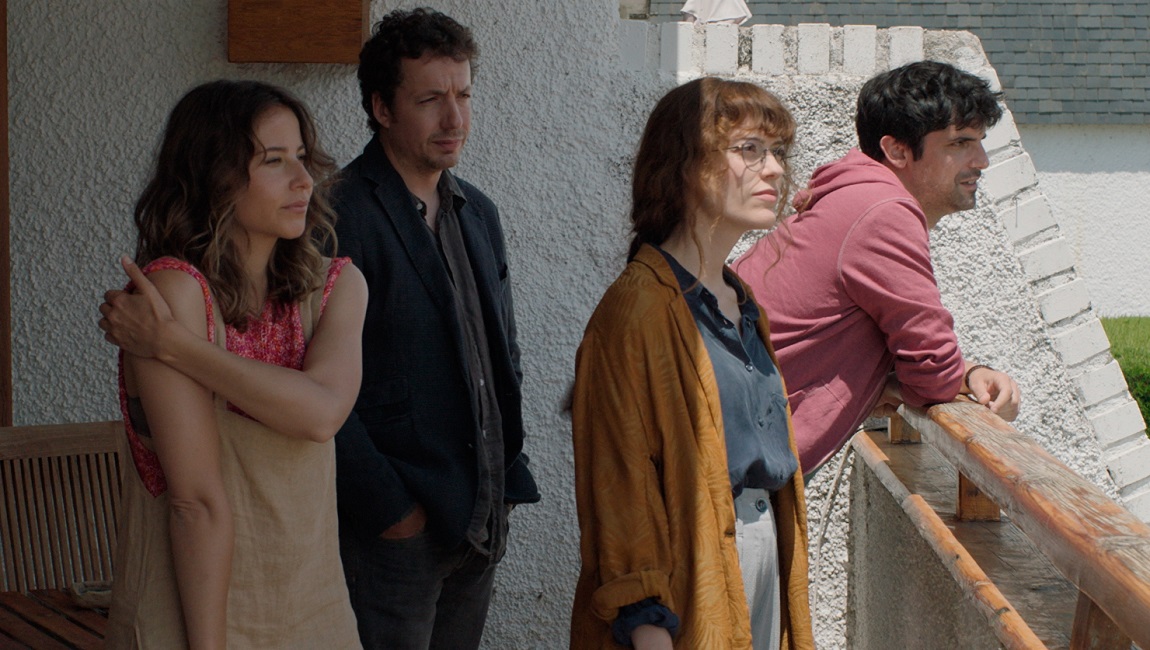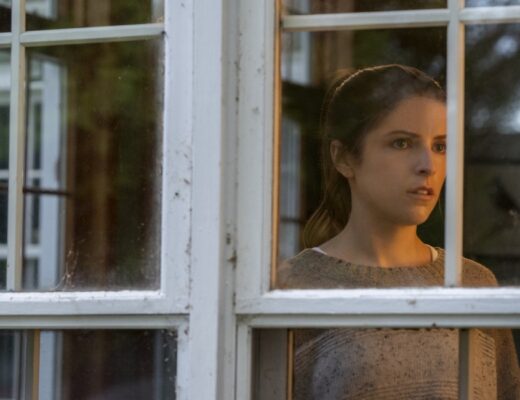At this point, there have been so many movies about Covid, either directly or by inference, that it’s barely necessary to make a note of this context. Even if filmmakers have no desire to address the pandemic head-on, various safety protocols have subtly (and not-so-subtly) altered every aspect of production. But Jonás Trueba’s charming new film, You Have to Come and See It, might be one of the first notable examples of post-Covid narrative — that awkward (and still ongoing) process of navigating friendships and easing back into social spaces after months and months of isolation and cautious trepidation. It’s a brief film, only 64 minutes long, and Trueba favors privileged moments and elliptical elisions rather than a traditional, plot-heavy narrative. It’s a sketch of a film, in other words, a casual endeavor that nonetheless contains ample grace and beauty.
The film begins with four friends attending a musical performance in a cáfe. Trueba allows the entire piece of music, a jazzy little piano number, to play out in full, occupying almost 10 minutes of runtime, the filmmaker seemingly content to soak in the ambiance and the pleasure of the performance. After the musician finishes, the friends begin to chitchat. It quickly becomes clear that Elena (Itsaso Arana) and Daniel (Vito Sanz), who live in the city, have not seen Susana (Irene Escolar) and Guillermo (Francesco Carril) for some time. Susana and Guillermo live in the suburbs, and while they try to impress upon their friends that it’s really not too far away and that they should come and visit, it’s obvious that the city-dwellers have no real desire to make the journey to the burbs. But Susana and Guillermo politely insist, and a sudden title card that states “6 months later” finds Elena and Daniel on a train, en route to visit after all. Guillermo picks them up from the station and drives them back to his house, detailing the local spots that he and Susana frequent while bemoaning how difficult it is to make friends outside of the city. The remainder of the film simply observes the foursome as they reconnect, sharing a meal and some drinks while talking about their lives. Trueba is a fan of Éric Rohmer, particularly the New Wave icon’s 1986 film The Green Ray, and indeed there’s more than a little of Rohmer’s talkiness in Trueba’s project. Most interesting is Trueba’s approach towards blocking his subjects, moving these characters through the confines of a home that feels somehow both comfy and confining. Pointedly, the audience is never given a clear sense of the building’s layout, so that each character takes turns being isolated in the frame from their companions. It’s a small thing, certainly, but it speaks to an underlying tension of sorts, a sense that no one is particularly comfortable here. Eventually, the talk turns from niceties to more serious discussions about the difficulties of conceiving a child and the (all too relatable) phenomenon of middle-aged people losing touch with old friends (“you have to come and see it” eventually becomes less an invitation than a plea). Eventually the film changes gears one last time for a kind of meta-, self-reflexive coda, which, surprisingly, links the proceedings to Abbas Kiarostami’s seminal Taste of Cherry. It’s a playful, even exuberant denouement, with the film’s precise formalism opening up to something more free-form, even experimental. Trueba has a keen sense of movement and a careful eye for performance; You Have to Come and See It provides ample evidence of his talents. It’s a small gem, unassuming yet quietly profound.
Published as part of NYFF 2022 — Dispatch 4.







